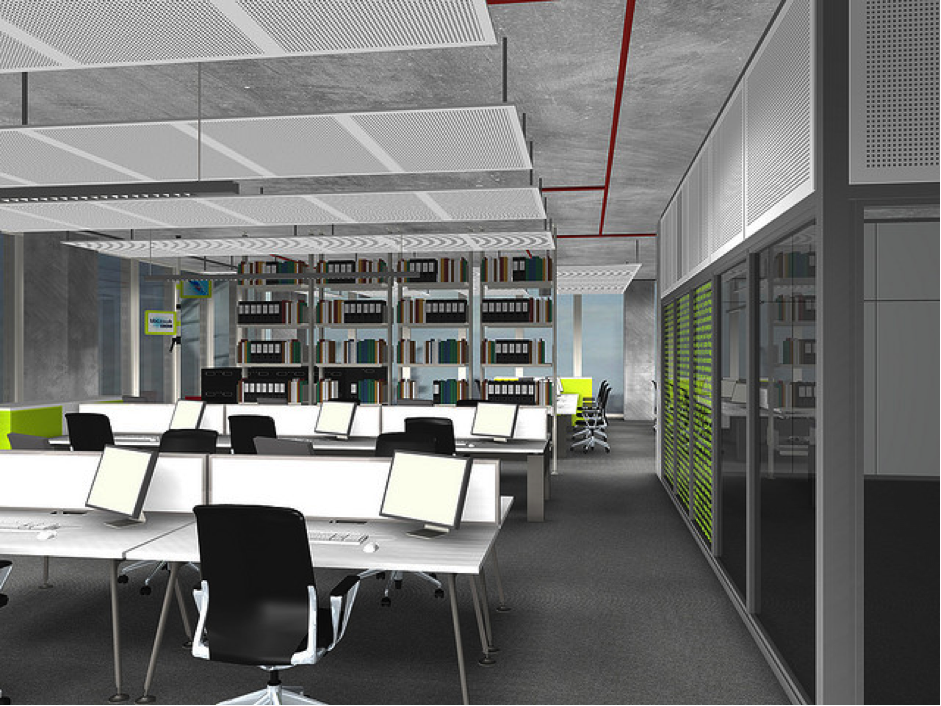Present-day office spaces might seem like they have been beamed from the set of a dystopian sci-fi series, but what does the future hold for workplace design? It seems that in the next few years, pared-down and simple design is likely to become the norm, with straight lines and uncomplicated colour schemes gaining precedent over what we see in the typical office right now.
Breaking down the walls
Future office spaces are likely to involve tailoring them towards the needs of workers, but how it can be achieved is still not that clear. However, two things which offices of the future are likely to adhere to are transparency and ease of collaboration, such as Paritzki & Liani’s TPL offices in Tel Aviv. The former involves the use of glass walls or fewer walls altogether to give the illusion of space and clarity.

Comfortable spaces for small teams via J Dee on FLICKR
A survey from Podspace recently found that 40% of workers were against partitioning of their desks, suggesting that open-plan office layouts are here to stay. In terms of collaboration, the modern office space is likely to allow for more of that, but how?
As design expert Barry Svigals of Svigals + Partners said, “Design is one of the great leveraging tools companies have at their behest— and it's not just furniture."
Allowing employees to have a say in how the office should look could be a big step towards a more collaborative workspace.

Bruce Mau Design's open plan office allows designers to see what other people are working on via FLICKR
Greater engagement
A major shift in culture is also likely to occur in future workplaces. In the next few years, more offices are likely to reflect the branding and values of the company, be it through the way desks are laid out or the colour scheme used for the walls and furniture.

Bringing the brand to the décor at Radio Works Fitzrovia
Hospitality is something else that could become a more prevalent feature in future offices.

Warehouse / Studio Vibe at Collective Agency in Portland, Oregon
In future, more workplaces could have either respite areas akin to staffrooms or cafes where workers can continue to do their jobs while in a more comfortable position. This could make them become more homely places to work.
Green and flexible
Flexibility is likely to become a major feature of workplaces in the future. This means that no workstation could be tailored for just one person, allowing workers to plug in wherever they choose. Green technology is also expected to play an increasingly prominent role in office design – energy-efficient lighting, sustainable furniture and extensive use of glass to allow natural light in, for example.
The wonder of youth

Room with a view at Coastlab Conference 2014
People who are members of ‘Generation Y’, including Millennials born after the year 2000, are likely to have future offices appeal to them. Talking about the generation’s impact on office design for decades to come, Catherine Juon of Beyond Startup said: “Creating rock star teams and high-performing businesses isn't about HR figuring out how to cater to the whims of each generation”.
Going after younger people seems like the way to go for offices. Members of Generation Y will want devices like interactive whiteboards, open-door office rooms and such, creating a sense of flow.



